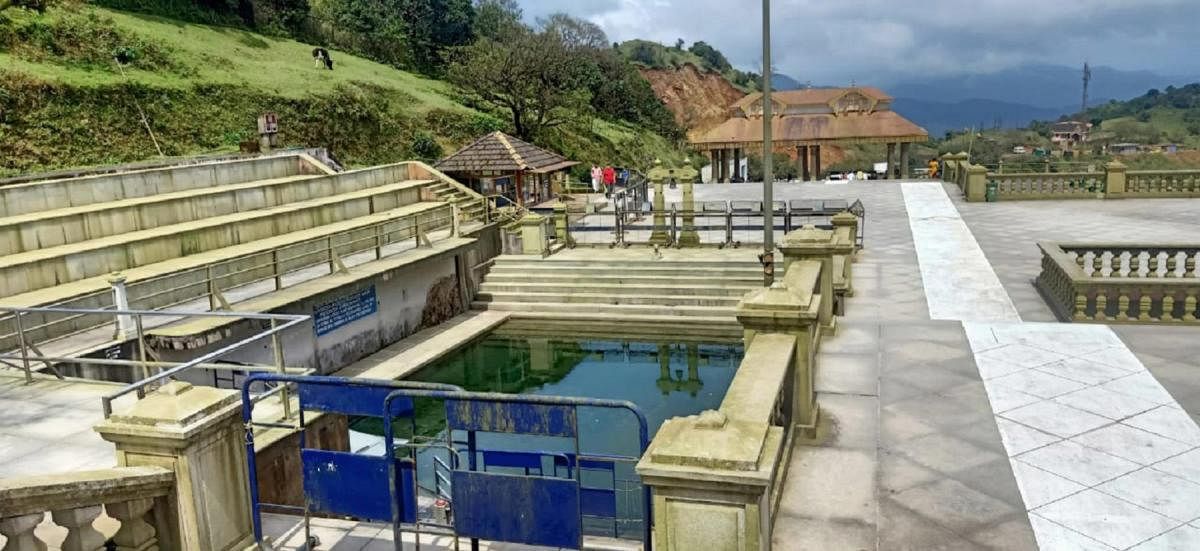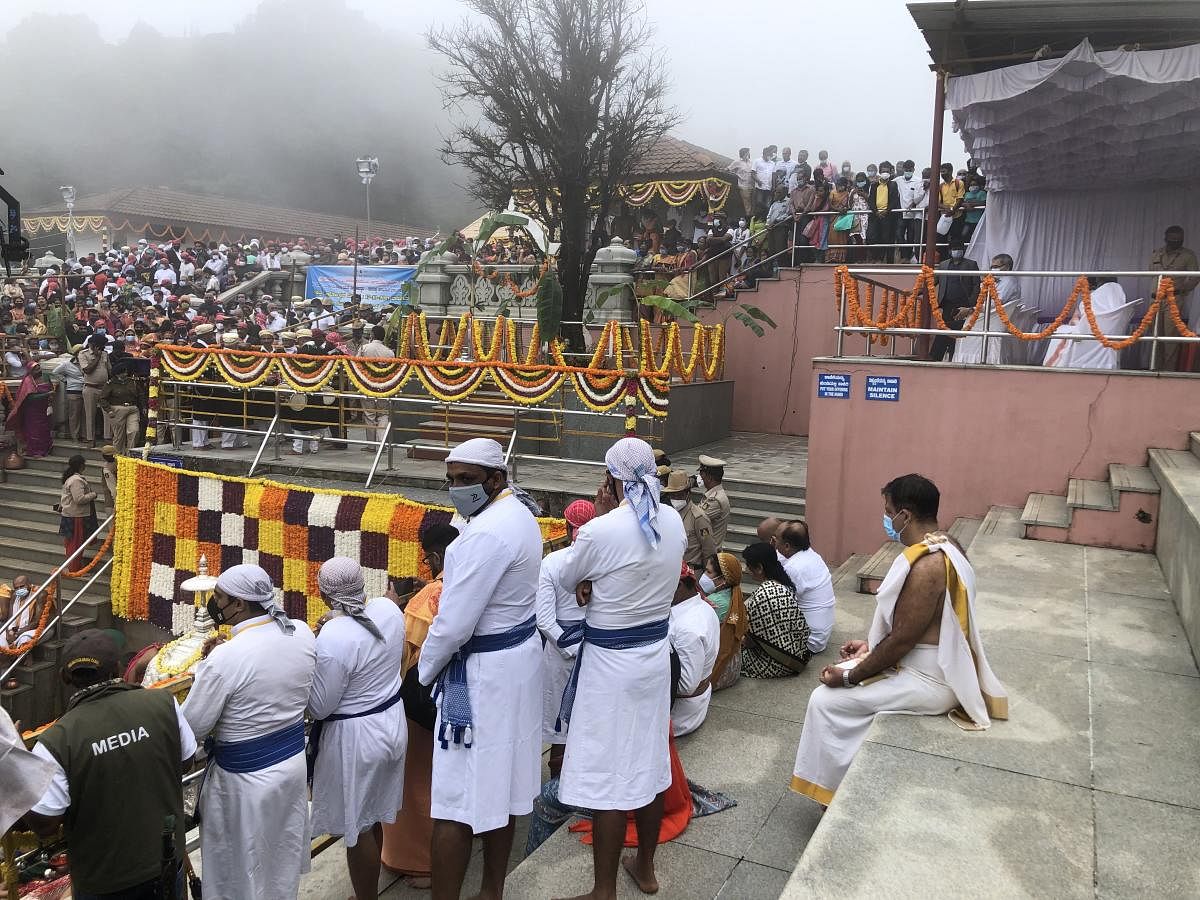

On October 17, on the morning of Cauvery Changrandi, I travelled to Bhagamandala in Kodagu with my uncle Bose Devaiah. Various Kodava organisations had assembled before the Bhagamandala shrine.
We washed our feet and sprinkled a little water on our heads at the Triveni Sangama, the holy confluence of rivers, and went around a holy tree. Then we offered hannu kayi (bananas and coconuts), prayed to the deity and circumambulated the temple.
Men dressed in the traditional Kupya Chele (dress) sang folk songs to the beat of the dudis (hourglass drums), while the women in Kodava saris held earthen lamps to the deity. These devotees visit the temple on the occasion every year.
All of them set out from Bhagamandala to Talacauvery, a distance of some eight km, on foot. Some are barefoot, while others wear sandals.
The hills were misty even at noon. The devastation from the previous year’s landslide was still visible. Police were present, and three vans with dish antenna marked the attendance of news channels.
The devotees left their sandals behind and entered the temple.
The steps lead down to the holy pool of water. Here lies a small kundike (holy water tank) with a sheltered statue behind it, which is said to be the source of the river, from where the Cauvery springs.
Devotees streamed into the temple as priests chanted sacred verses.
Folk singers in black kupya and red chele sang the dudi paat.
Women in Kodava sari offered aarati to the water.
By then, Kodagu’s elected politicians and bureaucrats had arrived for the function.
At one in the afternoon, the water in the kundike rose. The priests quickly scooped up the water, flinging it over their heads and over the devotees.
Volunteers dressed in white kupya and blue chele passed around copper pots of holy water to the devotees.
Legends say...
Kodagu has three major festivals — Kail Podh (the festival of weapons), Puthari (harvest festival) and Cauvery Changrandi.
The Changrandi corresponds to Thula Sankramana, when the sun enters the Libra zodiac. At an auspicious time, the Cauvery springs from the kundike in Talacauvery.
Legend has it that Lopamudra, the wife of the sage Agastya, turned into River Cauvery after his prolonged absence.
As she turns into the river, Agastya tries to stop her, but the Kodava women show her how to escape.
She swerves right at Balamberi (translates to 'right-turn' in English) and the force of the water forces the pleats of the sari to fall the other way — leading to the Kodava style of draping the sari, which is considered a blessing from the goddess.
Agastya is said to have then cursed his disciples for not stopping Lopamudra.
The Mandira family of Thavur and the Manavatira family of Cherangala were the hereditary managers of the Talacauvery temple.
The Pattamada family of Chirmangala also had duties in Talacauvery and Bhagamandala.
These families moved to Nelji during Tipu’s conflict with Kodagu in the 18th century. The Pattamada family relocated to Bengur.
During Changrandi, every house invokes the Goddess Cauvery in prayer, while preparing dosa and pumpkin curry as an offering. This is called kani poojo (worship of the goddess).
The thirtha (holy water) is brought home from Talacauvery. In some villages and households, food offerings, called meedi, are made to the ancestors of the family on that same day.
Ten days after Cauvery Changrandi, extended family members gather at their traditional homes and offer food to the ancestors at their family graveyard.
This day is called Pattalodi (ten days after) and the ceremony, karanang kodupo (offering to the ancestors).
Goddess Cauvery is said to have blessed the people of Kodagu and promised to appear every year as a spring in the kundike at Talacauvery.